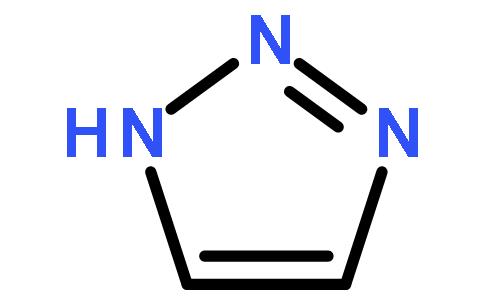Ketoprofen - A Journey Through Its Wonders and Applications
Oct 8,2024
Abstract
Ketoprofen, a versatile non-steroidal anti-inflammatory drug (NSAID), has garnered significant attention in the medical and scientific communities for its potent anti-inflammatory, analgesic, and antipyretic properties. This comprehensive review delves into the chemistry, pharmacology, clinical applications, and emerging research surrounding Ketoprofen, exploring its multifaceted nature and intriguing potential. By weaving together scientific findings and clinical observations, we aim to present a fascinating journey through the world of Ketoprofen.
Introduction
In the vast landscape of pharmaceutical compounds, Ketoprofen stands out as a testament to the ingenuity of modern medicine. Discovered and developed over the years, Ketoprofen (Chemical name: 2-(3-benzoylphenyl)propanoic acid; CAS Number: 22071-15-4) has emerged as a cornerstone in the treatment of inflammation, pain, and fever. Its journey from the laboratory to the clinic has been marked by numerous scientific breakthroughs and clinical successes, making it a staple in the pharmaceutical arsenal.1
Chemistry and Structure
Ketoprofen belongs to the 2-aryl propionic acid class of NSAIDs, characterized by a phenylacetic acid moiety attached to an aromatic ring. Its molecular formula, C16H14O3, gives it a molecular weight of 254.28 g/mol. The white or off-white crystalline powder exhibits a melting point range of 93-96°C, with a density of approximately 1.2 g/cm³. Ketoprofen's stability and solubility profile, particularly in ethanol, has facilitated its formulation into various dosage forms, including tablets, capsules, and topical preparations.2

Pharmacology
The therapeutic efficacy of Ketoprofen stems from its ability to inhibit cyclooxygenase (COX) enzymes, key players in the inflammatory cascade. COX exists in two isoforms: COX-1, constitutively expressed in most tissues, and COX-2, induced primarily during inflammation. Ketoprofen acts as a non-selective inhibitor of both COX-1 and COX-2, albeit with a slightly higher affinity for COX-1. This dual inhibition leads to a decrease in the production of prostaglandins, potent mediators of inflammation, pain, and fever.
Ketoprofen's IC50 values for COX-1 and COX-2 in human blood monocytes have been reported to be 2 nM and 26 nM, respectively, highlighting its potent inhibitory activity. Additionally, its reversible mode of action minimizes the risk of gastrointestinal bleeding associated with irreversible COX-1 inhibitors.
Clinical Applications
1. Pain Management
Ketoprofen's analgesic properties make it an effective treatment option for various pain conditions, including acute and chronic pain. It is commonly prescribed for musculoskeletal disorders such as osteoarthritis, rheumatoid arthritis, and ankylosing spondylitis. The drug's oral and topical formulations offer flexibility in dosing, allowing for individualized treatment plans.
2. Anti-inflammatory Therapy
As an NSAID, Ketoprofen's primary role is to reduce inflammation. It is widely used in the management of inflammatory conditions, including tendinitis, bursitis, and gout. By inhibiting prostaglandin synthesis, Ketoprofen helps alleviate swelling, redness, and heat associated with inflammation.
3. Fever Reduction
The antipyretic effect of Ketoprofen is attributed to its ability to reduce prostaglandin E2 levels in the hypothalamus, the body's thermoregulatory center. This action leads to a decrease in body temperature, making Ketoprofen a valuable treatment option for fever associated with infections or inflammatory conditions.
4. Postoperative and Post-traumatic Pain
Ketoprofen's rapid onset of action and long duration of effect make it an attractive choice for managing postoperative and post-traumatic pain. Its use in this setting has been shown to improve patient outcomes and reduce the need for opioid analgesics, thereby mitigating the risk of opioid-related adverse effects.3
Emerging Research and Future Directions
Recent studies have explored the potential of Ketoprofen in novel therapeutic areas, further expanding its clinical applications.
1. Topical Formulations for Musculoskeletal Pain
Topical Ketoprofen formulations, such as Transfersome gel, have shown promising results in the treatment of muscle soreness following exercise. These formulations offer improved bioavailability and reduced systemic side effects compared to oral administration.
2. Neuroprotection
Ketoprofen's anti-inflammatory properties have sparked interest in its potential neuroprotective effects. Preliminary studies suggest that Ketoprofen may mitigate neuronal damage in models of neurodegenerative diseases, such as Parkinson's disease and Alzheimer's disease.
3. Cancer Therapy
The role of inflammation in cancer progression has led researchers to investigate the potential of NSAIDs, including Ketoprofen, in cancer prevention and treatment. Studies indicate that Ketoprofen may inhibit tumor growth and metastasis by modulating inflammatory pathways and inducing apoptosis in cancer cells.4
Safety and Side Effects: A Balancing Act
Like all medications, Ketoprofen is not without its side effects. Common adverse reactions include gastrointestinal disturbances (nausea, vomiting, abdominal pain), dizziness, and headaches. Long-term use may increase the risk of gastrointestinal bleeding and renal impairment. Therefore, it is essential to monitor patients closely and adjust dosing regimens accordingly.
Special precautions are necessary for certain populations, including pregnant and lactating women, children under 3 years of age, and individuals with a history of gastrointestinal bleeding or renal dysfunction.5
Conclusion
Ketoprofen, with its potent anti-inflammatory, analgesic, and antipyretic properties, has firmly established itself as a cornerstone in modern medicine. From its humble beginnings in the laboratory to its widespread clinical applications, It's journey has been marked by scientific progress and clinical success. As research continues to unravel the mysteries of this multifaceted drug, new therapeutic avenues are sure to emerge, further expanding the reach and impact of this wonder drug.
In conclusion, Ketoprofen is more than just a medication; it is a testament to the power of scientific inquiry and the potential of pharmaceutical innovation. As we embark on this fascinating journey through the world of it, we can only anticipate the many wonders that lie ahead.
References:
[1] Ketoprofen[J]. Reactions Weekly, 2022, 1 1. DOI:10.1007/s40278-022-08866-x.
[2] CLAUDIA CARBONE. The safety of ketoprofen in different ages.[J]. Journal of Pharmacology & Pharmacotherapeutics, 2013, 4 Suppl 1. DOI:10.4103/0976-500X.120967.
[3] KOKKI H. Ketoprofen pharmacokinetics, efficacy, and tolerability in pediatric patients.[J]. Pediatric Drugs, 2010, 12 5. DOI:10.2165/11534910-000000000-00000.
[4] KLEFAH A. K. MUSA L A E Jon M Matxain. Mechanism of Photoinduced Decomposition of Ketoprofen[J]. Journal of Medicinal Chemistry, 2007, 50 8: 1723-1998. DOI:10.1021/jm060697k.
[5] LOET X L. Safety of ketoprofen in the elderly: a prospective study on 20,000 patients.[J]. Scandinavian journal of rheumatology. Supplement, 1989, 83. DOI:10.3109/03009748909101474.
- Related articles
- Related Qustion
- Ketoprofen: Synthesis, Side effects, and Drug interactions Jul 11, 2024
Ketoprofen, chemistry 3-benzoyl by name-Alpha-Methyl toluylic acid, is a non-steroidal anti-inflammatory analgesics, has anti-inflammatory, analgesic, analgesic effects.
- The Pharmacology of ketoprofen Apr 8, 2022
Ketoprofen (3-benzoyl-α-methylphenylacetic acid) is a 2-arylpropionic acid potent non-steroidal anti-inflammatory drug.
Hydrocortisone acetate, a synthetic derivative of the natural steroid hormone hydrocortisone, is widely used in the pharmaceutical and healthcare industries.....
Apr 10,2025Chemical Reagents1,2, 3-triazole is a five-membered nitrogen heterocyclic compound. In this paper, its research progress, application and development prospect are reviewed.....
Oct 8,2024APIKetoprofen
22071-15-4You may like
- Spotlight on N-Octyl Pyrrolidone: Antibacterial Activity, Environmental Fate, and Solvent Effects
Apr 17, 2025
- Trimethylolpropane Trimethacrylate: From Industrial Preparation to Mechanical Performance
Apr 17, 2025
- Dihydrocoumarin: An HDAC Inhibitor with Implications for DNA Repair, Aging, and One - Pot Synthesis
Apr 17, 2025
- Ketoprofen
-

- $0.00 / 1kg
- 2025-04-17
- CAS:22071-15-4
- Min. Order: 1kg
- Purity: 97%
- Supply Ability: 1000
- Ketoprofen
-

- $150.00 / 1kg
- 2025-04-17
- CAS:22071-15-4
- Min. Order: 1kg
- Purity: 99%
- Supply Ability: 500kg
- Ketoprofen
-

- $1.00 / 1Kg/Bag
- 2025-04-16
- CAS:22071-15-4
- Min. Order: 1KG
- Purity: 98.0%min
- Supply Ability: 5ton/month






